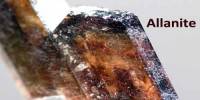Thermoelectric cooling is a method that uses the Peltier effect to cool by delivering an electric current through the junction of two distinct conducting materials. It employs the Peltier effect to generate a heat flow at the interface of two distinct materials. A Peltier cooler, heater, or thermoelectric heat pump is a solid-state active heat pump that moves heat from one side of the device to the other while using electrical energy, depending on the direction of the current.
The Peltier effect, named after French physicist Jean Charles Athanase Peltier, describes the process in which heat is absorbed or released at the junction of two different conductors while an electric current travels between them. This type of instrument is also known as a Peltier device, Peltier heat pump, solid-state refrigerator, thermoelectric cooler (TEC), and, on occasion, a thermoelectric battery. It can be used for both heating and cooling, however, cooling is the more common application. It can also function as a temperature controller, either heating or cooling.
A thermoelectric module, often known as a Peltier module or device, is the fundamental component of a thermoelectric cooling system. It is normally made up of two semiconductor materials: an n-type semiconductor and a p-type semiconductor. When a direct current (DC) is provided to the module, electrons pass from the n-type to the p-type semiconductor, absorbing heat on the cold side and releasing it on the hot side.
Key features and applications of thermoelectric cooling include:
- Solid-state technology: Thermoelectric coolers are solid-state devices, meaning they have no moving parts like compressors or refrigerants. This makes them reliable, compact, and suitable for applications where space and weight are critical.
- Efficiency: While thermoelectric cooling has advantages, it is generally less efficient than traditional compressor-based refrigeration systems. The cooling capacity is often lower, making them more suitable for smaller-scale cooling applications.
- Temperature control: Thermoelectric coolers can precisely control temperatures, and they can be used for both cooling and heating applications by reversing the direction of the electric current.
- Applications: Common applications of thermoelectric cooling include portable refrigerators, beverage coolers, CPU coolers in computers, and temperature-controlled containers for medical or scientific purposes.
This technology is far less commonly applied to refrigeration than vapor-compression refrigeration is. The primary advantages of a Peltier cooler compared to a vapor-compression refrigerator are its lack of moving parts or circulating liquid, very long life, invulnerability to leaks, small size, and flexible shape.
Its main drawbacks are high cost per cooling capacity and poor power efficiency (low coefficient of performance or COP). Many researchers and firms are working to build low-cost, high-efficiency Peltier coolers.
Despite their benefits, thermoelectric coolers are not as effective as traditional refrigeration technologies and are frequently utilized in applications where specific properties, such as mobility, precision temperature control, or the absence of moving components, are more important than overall efficiency. Ongoing research seeks to improve the efficiency of thermoelectric materials and broaden their uses.
















